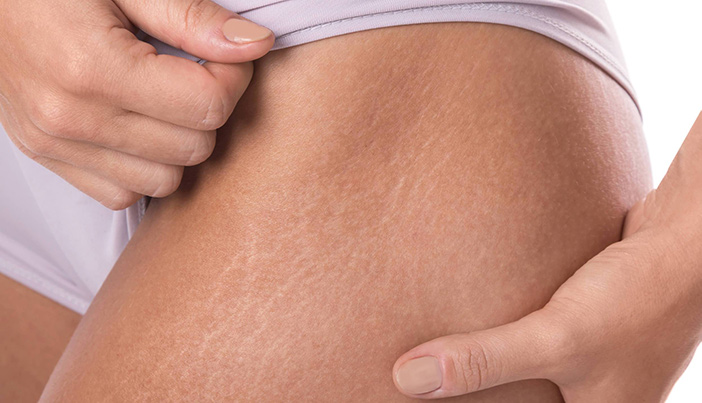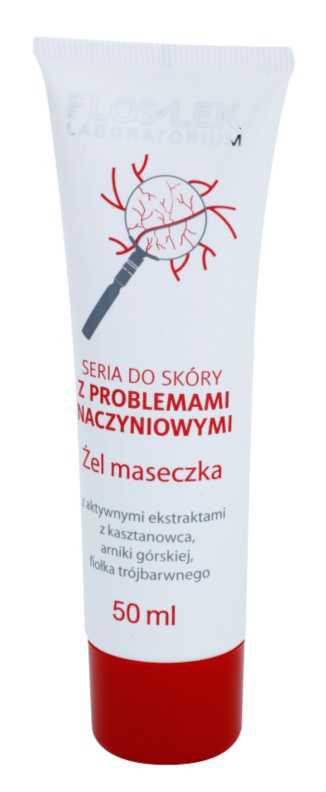
The problem of stretch marks affects almost 70 percent. women and about 40 percent. men! Stretch marks are unsightly red or white stripes. Stretch marks are most often found on the abdomen, breasts, thighs and buttocks, as well as the shoulder girdle and back. How to effectively and permanently eliminate stretch marks on the skin?
Stretch marks are changes deeply located in the skin, so getting rid of them is troublesome. Peels, dermabrasion, mesotherapy ... are just some of the treatments that can help in eliminating stretch marks. The latest methods for stretch marks are also gaining popularity: fractional microneedle radiofrequency and biodermogenesis.
Biodermogenesis allows you to remove even permanent stretch marks, affects the rebuilding of collagen, elastin and neomelanocytogenesis, which means that stretch marks can be exposed to sunlight after the first treatments. For the first time, the treatment of stretch marks allows them to re-tan, thanks to which the treated skin looks like healthy tissue. This is a big advantage compared to other treatments that so far have not allowed to achieve a uniform color of tanned skin. Patients satisfied with the results and clinical trials with a five-year follow-up period are proof of the effectiveness of this method - explains Dr. Ewa Rybicka from the Estetica Nova Clinic.
Stretch marks: meet your opponent
Stretch marks are defects in the deep layers of the skin that result from breaking the elastic fibers. Collagen and elastin fibers break for two reasons: because they are exposed to too much stretching in a short time or because they are too weak. Stretch marks most often appear in pregnant women, people who do bodybuilding exercises, people who are overweight and in rapidly growing adolescents. Hormonal disorders can also be their cause. Genetic conditions are also important. The most important factor in the treatment of stretch marks is what stage they are at. Stretch marks arise in two stages. The first, the so-called Inflammatory is the moment when the elastic fibers have just been broken and the dermis has been injured, resulting in inflammation. This is when we start to notice stripes in various shades of red on our body. This stage lasts from several months to 2 years. Its length depends on how strong our body is. He tries to get rid of stretch marks on his own, but is not able to, because the losses in the fibers are too large. After this period, there is a second stage called atrophy, during which the bands turn white and the torn tissue, instead of regenerating, simply disappears. Stretch marks should first of all be prevented. For this purpose, it is necessary to ensure proper hydration and lubrication of the skin. In order to avoid stretch marks, it is worth reaching for peels that will make moisturizing and oiling cosmetics easier to penetrate the skin. Massages that can be performed independently at home, e.g. in the shower, massaging the body with circular movements with a rough sponge also bring good effects on stretch marks.
Stretch marks - how to get rid of them?
The rules for treating stretch marks are simple - it's best to react to the appearing bands as early as possible. There are many methods for inflammatory stretch marks that will help you get rid of them or make them less visible - for example, deep peeling, dermabrasion or mesotherapy. Peels and dermabrasion involve exfoliation of the epidermis and several layers of the dermis. Both methods damage the skin and thus stimulate its regeneration, i.e. production of collagen and elastin. Both treatments require a very experienced specialist and then a long, about 2-week convalescence. In turn, mesotherapy for stretch marks involves injecting the skin with special regenerating cocktails. In the case of stretch marks, they can be cocktails based on polylactic acid, which are to stimulate damaged tissue to rebuild, or based on hyaluronic acid, which "mask" the resulting stretch marks. The procedure involves a large number of punctures and is therefore painful. Another tool for removing stretch marks is a fractional laser. Stretch mark removal laser treatment is safer and does not require as long healing as the first of these methods. The laser light penetrates deep into the skin and is absorbed by the water contained in the cells, which is rapidly heated and then evaporated. In this way, collagen cells are damaged and repair processes are stimulated, which result in the formation of new collagen and the treatment of fresh stretch marks. Regardless of the use of the methods described above, it is worth using irradiation with vascular lasers for red stretch marks, which accelerate their fading. A copper-bromide or dye laser will work best here.
Atrophic stretch marks: microneedle radiofrequency
It is much more difficult to get rid of atrophic stretch marks. Such stretch marks are located deep in the skin, and the amount of normal tissue in the stretch mark is negligible, so external dermabrasion and peeling are powerless against them. The fractional laser works in the deeper layers of the skin, but it only reaches a depth of 1.5 millimeters, which may not be enough. Fortunately, there is also a completely new method for stretch marks - microneedle radiofrequency. It is a procedure that involves simultaneously puncturing and heating the skin with a head equipped with 25 micro-needles, allowing it to penetrate the skin to a depth of 3.5 millimeters. At the time of injection, a beam of radio waves is emitted, which heats the skin along the entire length of the microneedles. Such heating and puncturing stimulates the fibroblasts to produce new elastin and collagen. The fibers twist and thicken, and new bonds are formed between them. In this way, deeply located stretch marks begin to fill up again and, as a result, disappear. According to Dr. Marek Wasiluk, this method is so far the most effective in the treatment of old stretch marks. Fractional microneedle radiofrequency allows you to get rid of up to 100 percent. atrophic stretch marks, which cannot be achieved with other methods. Its effectiveness lies in the strong stimulation exactly where it is needed, i.e. in the stretch, not around it. The effects are visible after the first treatment, although you usually need to perform a series of 2-3 sessions. Thanks to the possibility of precise determination and control of the parameters adopted for the procedure (puncture depth and temperature), this method is also very safe, and healing much faster than in the case of other methods. There is also no damage to the skin surface, so there are no infections or complications. The inflammation that develops inside the skin lasts about a month, and the final effect is visible after two or three. It is worth mentioning that fractional microneedle radiofrequency is also very effective against inflammatory stretch marks. Usually one treatment is enough to completely get rid of them.





